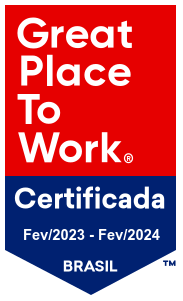Efficient software development hinges on the right product management tools. From agile project management and software development tools to product roadmapping and team collaboration tools, various options cater to different team sizes and needs.
Choosing the right product management tool is crucial for the success of any software project. Each tool offers unique features and capabilities.
That’s why this guide explores the best product management tools for software teams, helping you choose the one that optimizes your workflow and fosters successful project delivery. Let’s explore five popular options along with their pros and cons:
1. Jira Software
Pricing: Free trial. Starts at $7 per user/month
Jira Software is a comprehensive project management tool a popular choice for agile project management. It offers robust features for product roadmapping and backlog management and excels at issue tracking, bug management, and project planning.
Pros:
- Robust feature set for agile teams
- Strong integration with other Atlassian tools
- Customizable workflows
- Extensive reporting capabilities
Cons:
- Can be complex for small teams or simple projects
- Pricing can be steep for large teams
Use Cases:
- Agile project management: Ideal for teams following Scrum or Kanban methodologies.
- Issue and bug tracking: Efficiently manage and prioritize tasks, defects, and feature requests.
- Roadmapping: Create visual representations of product roadmaps and strategic goals.
- Portfolio management: Manage multiple projects and allocate resources effectively.
- DevOps integration: Seamlessly integrate with development and operations tools for end-to-end visibility.
Features:
- Comprehensive project management, issue tracking, and bug tracking
- Agile methodologies support (Scrum, Kanban)
- Customizable workflows and reporting
- Integration with other Atlassian tools (Confluence, Bitbucket)
2. Trello
Pricing: Free for basic plan, paid plans start at $5 per user/month
Trello’s board-based interface provides a visual and intuitive approach to project management. While ideal for smaller teams, Trello can also be used for large-scale project management with careful planning. It’s ideal for teams that prefer a flexible and customizable workspace.
Pros:
- Simple and easy to use
- Highly visual and flexible
- Great for small teams and personal projects
- Strong collaboration features
Cons:
- Limited advanced features for complex projects
- Reporting capabilities are basic
Use Cases
- Kanban-style project management: Visualize workflow and track progress in real-time.
- Simple task management: Ideal for small teams or individual projects.
- Collaboration: Facilitate team communication and collaboration through comments and attachments.
- Basic project planning: Create boards and lists to organize tasks and priorities.
Features
- Kanban-style board for visual project management
- Simple and intuitive interface
- Flexible customization options
- Integrations with other tools (Slack, Google Drive)
3. Asana
Pricing: Free for basic plan, paid plans start at $10.99 per user/month
Asana offers a balance between simplicity and robust features. It’s suitable for teams of all sizes looking for a versatile option for teams of all sizes seeking a balance between simplicity and advanced features for software development team collaboration.
Pros:
- User-friendly interface
- Strong focus on team collaboration
- Time-tracking (great for charging freelance or consulting gigs)
- Flexible project views (list, board, calendar)
- Integrations with popular tools
Cons:
- Can become complex for large-scale projects
- Advanced features might require additional plans
Use Cases
- Task and project management: Organize and prioritize tasks across multiple projects.
- Team collaboration: Improve communication and teamwork through shared workspaces.
- Portfolio management: Manage multiple projects and resources effectively.
- Time tracking: Monitor project progress and allocate resources efficiently.
Features
- Task management, project tracking, and team collaboration
- Customizable workflows and views
- Integration with other tools (Google Calendar, Slack)
- Time tracking and reporting
4. ClickUp
Pricing: Free for basic plan, paid plans start at $5 per user/month
ClickUp is an all-in-one productivity platform that includes project management features. It offers a wide range of functionalities, making it suitable for various team sizes and project types. ClickUp caters to various project types, including agile and waterfall methodologies.
https://www.youtube.com/watch?v=vUlC187qYhk
Pros:
- Comprehensive feature set
- Customizable workflows
- Time tracking and reporting
- Strong integrations
Cons:
- Can be overwhelming for users with simpler needs
- Learning curve might be steeper compared to other tools
Use Cases
- All-in-one productivity platform: Combine project management, task management, and document collaboration.
- Customizable workflows: Adapt the tool to fit your team’s specific needs.
- Goal setting and tracking: Align team efforts with overall objectives.
- Time tracking and reporting: Measure productivity and identify bottlenecks.
Features
- All-in-one platform for project management, task management, and document collaboration
- Customizable views (Kanban, List, Gantt)
- Time tracking and reporting
- Integrations with popular tools
5. Monday.com
Pricing: Free for basic plan, paid plans start at $8 per user/month
Monday.com is a highly customizable platform for agile and traditional project management. It offers a visual and flexible approach to work management. It’s suitable for teams looking for a platform to adapt to their specific needs.
Pros:
- Highly customizable interface
- Strong focus on visual workflows
- Automation features
- Integrations with a wide range of tools
Cons:
- Can be complex to set up initially
- Pricing can be higher compared to other options
Use Cases
- Highly customizable work management: Create custom workflows and dashboards.
- Visual project management: Use various views (Kanban, Gantt, Calendar) to suit different project needs.
- Automation: Automate repetitive tasks to save time.
- Integrations: Connect with other tools to streamline workflows.
Features
- Highly customizable work management platform
- Visual workflow builder
- Integrations with a wide range of tools
- Automation and time tracking
Note: This list is not exhaustive, and the best tool for your team will depend on your specific needs and preferences. Consider factors like team size, project complexity, budget, and desired features when making a selection.
FAQ
General Questions
What is the best product management tool for small teams?
Consider tools like Trello or Asana for their simplicity and flexibility.
What is the best product management tool for large enterprises?
Platforms like Jira, Aha!, or ProductPlan can handle complex product portfolios and large teams.
How do I choose the right product management tool for my team?
Evaluate your team’s specific needs, size, and budget. Consider factors like collaboration features, integration capabilities, and pricing.
Integration and Customization
Can I integrate my product management tool with other tools?
Most product management tools offer integration capabilities with project management, design, and development tools.
Can I customize the tool to fit my team’s workflow?
Many tools offer customization options, such as creating custom fields, workflows, and reports.
Tool-Specific Questions
What is the difference between Jira and Trello?
Jira is more suited for complex software development projects with agile methodologies, while Trello is a simpler tool for smaller teams or Kanban-style workflows.
Can I use Jira for product management?
Yes, Jira offers robust features for product planning, roadmap creation, and backlog management.
What are the best free product management tools?
Trello, Asana, and Monday.com offer free plans with basic features.
Other Ideation and Planning Tools You May Like
- Wireframing and Prototyping Tools: Used to create visual representations of the product.
- Market Research Tools: Gather insights into user behavior and market trends. Examples:

International Marketing Leader, specialized in tech. Proud to have built marketing and business generation structures for some of the fastest-growing SaaS companies on both sides of the Atlantic (UK, DACH, Iberia, LatAm, and NorthAm). Big fan of motherhood, world music, marketing, and backpacking. A little bit nerdy too!


